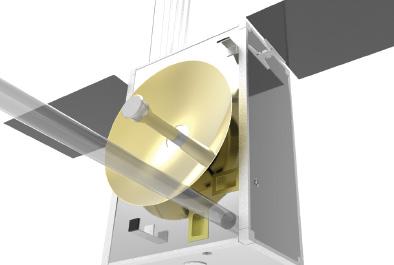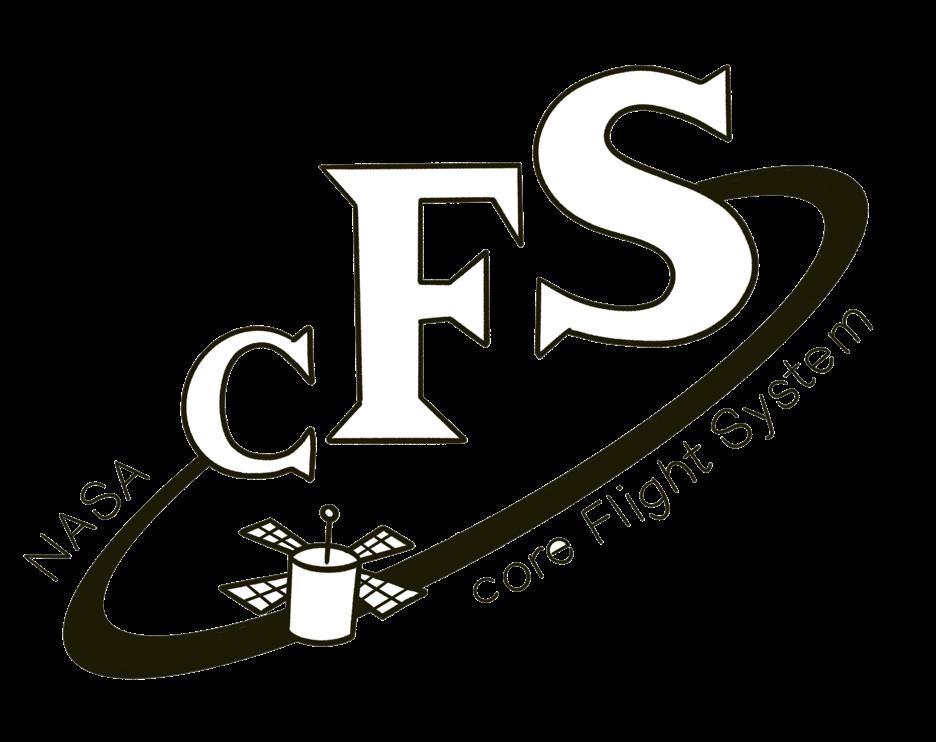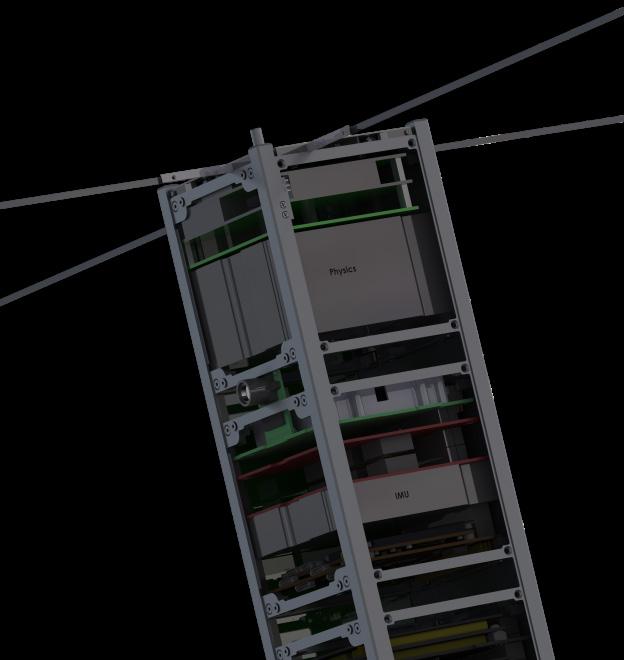
13 minute read
Ion Control System
For the last few years, Goddard has participated in a public-private collaboration called the Small Satellite Reliability Initiative. This all-volunteer endeavor seeks to improve the confidence that SmallSat-based missions will achieve their mission objectives.
This year, the initiative received funding from NASA Headquarters to compile a knowledge base that will incorporate best practices, lessons learned, design and development guidelines, and other resources acquired by the SmallSat community to date. In doing so, the initiative will help stakeholders, developers, and other interested groups improve their ability to achieve mission objectives with SmallSats.
Advertisement
“We’re quite excited to deliver this product to the community,” Johnson says.
An initial version of the SmallSat Mission Confidence Knowledge Base will launch during or shortly after the 2020 SmallSat Conference. Users can explore the online platform and provide feedback to continue improving the resource. The initiative is working closely with the Small Spacecraft Systems Virtual Institute, Johnson says. This kind of resource-pooling effort is only possible through participation from organizations all across the SmallSat spectrum, from government agencies and private companies to nonprofits and universities. The intent, Johnson says, is to offer a broad assortment of knowledge targeting a diversity of mission developers and stakeholders.
“We’re gathering up the best of what we know in order to leverage SmallSat activities from across the aerospace sector – this will allow the community to understand what’s been done and what might be possible to achieve,” Johnson adds.
There’s immense value in working across organizations to accomplish mission objectives in a cost-effective manner, Johnson says. Though Goddard and the government sector can serve as an enabler and a catalyst, public-private collaborations such as the Small Satellite Reliability Initiative need participation from the private sector in order to thrive.
“There’s so much value in working across sectors,” Johnson says. “Knowledge is power, and when we can make knowledge available where it’s needed and when it’s needed, that helps everyone succeed.”
— Michael Johnson, Chief Technologist, Goddard Engineering and Technology Directorate
Photo Credit: NASA/Antti Pulkkinen
The proposed Science-Enabling Technologies for Heliophysics (SETH) mission will demonstrate a first-of-its-kind heliophysics instrument.

Optical communication, a first-of-its-kind heliophysics instrument, and creative rideshare approaches – from beginning to end, the proposed Science-Enabling Technologies for Heliophysics (SETH) mission is chock full of innovation.
“This is a SmallSat technology demonstration mission,” explains Antti Pulkkinen, a Goddard scientist and principal investigator for SETH. “We’re demonstrating high data rate optical communications on a SmallSat, and we’re also demonstrating a new science instrument called HELENA.”
In 2019, NASA funded SETH for a $400,000 mission concept study. If selected for further development, SETH will hitch a ride as a secondary payload with the Interstellar Mapping and Acceleration Probe (IMAP), a mission conducted by NASA, Johns Hopkins University’s Applied Physics Lab (APL), and Princeton University.
SETH evolved from a larger mission concept called CATSCANS, which featured a constellation of SmallSats equipped with solar imaging instruments in deep space. While figuring out engineering logistics, Pulkkinen and his team determined that CATSCANS would generate enormous volumes of data. With some members of the constellation stationed far from Earth, standard communications systems wouldn’t be able to handle the transmission of data from the spacecraft back to stations on the ground.
“This situation pushed us to look at new, innovative solutions for our communications system,” Pulkkinen says.
Optical communication is a promising new technique for sending data back and forth through space using light instead of radio waves. Lasers can transmit data at higher rates and faster speeds than radio frequencies, which make them attractive alternatives to current communications methods.
The CATSCANS mission’s solar imaging instruments would generate about 500 megabytes of data per day. Using standard X-band radio frequency systems, it would take six days for a spacecraft to send one day’s worth of data
Proposed SmallSat mission will test optical communication and heliophysics instrument SOLAR SMALLSAT
back to Earth from about 46.5 million miles away. With an optical communications system, the downlink would only take 100 minutes.
NASA’s Lunar Laser Communication Demonstration from 2013 to 2014 successfully tested optical communications technology, and the yet-to-be-launched Laser Communications Relay Demonstration (LCRD) will further prove the technique’s value in space.
Though optical communication has a promising future, no one has yet developed or flown SmallSat optical communication systems in deep space, meaning that the technology hadn’t advanced far enough to be used on the CATSCANS mission. Instead, Pulkkinen and his team decided to pursue a technology demonstration mission with a single SmallSat.
“LCRD is a geostationary mission, and the flight terminal weighs tens of kilograms,” Pulkkinen says. “SETH’s flight terminal will weigh around 3 kilograms, so it’s a completely different engineering challenge.”
If SETH can successfully demonstrate SmallSat optical communications in space, it will “open the floodgates” for working with large data volumes on SmallSat missions, Pulkkinen says. NASA could use SmallSats to take high-resolution images of the Moon’s surface or conduct data-heavy astrophysics missions.
“Optical communication is science-enabling,” Pulkkinen says. “Without it, we wouldn’t be able to do missions like this.”
OPTICAL
COMMUNICATION IS
SCIENCE-ENABLING.
WITHOUT IT, WE
WOULDN’T BE ABLE TO
DO MISSIONS
LIKE THIS.” — Antti Pulkkinen, SETH PI The communications technology will support SETH’s science instrument, called the HELio Energetic Neutral Atom (HELENA) detector. It’s tailor-made to take direct measurements of solar energetic neutral atoms, a first for heliophysics instruments. In addition to making a splash in terms of fundamental science advancements, HELENA is also sensitive to solar X-rays and energetic charged particles, which pose dangers for human spaceflight. As NASA gears up for Moon and Mars missions, it’s more important than ever to detect radiation threats. Instruments like HELENA could help protect space crews from harmful solar emissions.
If selected, SETH will take advantage of NASA’s increasing rideshare opportunities by launching with the IMAP mission and other spacecraft on the same launch vehicle. Weighing around 180 pounds, the SETH spacecraft bus will fit onto an EELV Secondary Payload Adapter (ESPA) ring, which NASA and other organizations use to send multiple payloads together into space. ESPA rings can offer significant budgetary benefits, since launch costs are split between missions.
When the other ride share payloads deploy and the IMAP spacecraft separates from the upper stage of the launch vehicle, SETH will utilize upper stage disposal burn to achieve its intended course. This novel approach maximizes efficiency for the small spacecraft mission, allowing it to achieve a more desirable orbit than it would on its own.
“We’re innovating not only in our spacecraft but also
in how we get to our trajectory,” Pulkkinen points out.

Photo Credit: NASA/Bill Hrybyk GODDARD SOFTWARE FOR CUBESATS AND SMALLSATS High-quality software sets the stage for mission success. Software engineers with NASA’s Goddard Space Flight Center have spent years honing the specialized code that helps keep a spacecraft running smoothly. From simulating flight parameters to executing commands in space, software empowers CubeSat and SmallSat missions to capture new science data and demonstrate technologies in space.

Goddard has several open-source software packages that can help smaller missions get off the ground. The core Flight System (cFS) is a flight software framework with a layered architecture that builds on best practices from previous missions and works in tandem with mission-specific applications. The NASA Operational Simulator for Small Satellites (NOS3) is a suite of tools that caters specifically to small satellite missions and helps shorten development timelines.
Flight-tested on recent CubeSat missions, these software offerings can save valuable time and ease budgets by preventing the need to start from scratch with software development. If your mission has software needs, please visit https:// github.com/nasa/cFS to learn more.
NASA OPERATIONAL SIMULATOR FOR SMALL SATELLITES (NOS3) NOS3 brings several compelling advantages to SmallSat missions. It lessens cost, reduces risk,
FOR SMALLSAT MISSIONS THAT INVOLVE UNIVERSITY STUDENTS, WE WANT TO MAKE cFS EASIER FOR STUDENTS TO GET UP AND RUNNING.” — James Marshall, Goddard software engineer
and allows missions to focus on accomplishing science objectives.
CubeSat missions tend to move at a fast pace, meaning that progress will advance more quickly if multiple stages of the mission can happen in parallel. NOS3 is able to emulate flight hardware, allowing a software-only test environment early in the mission’s development and testing phases. Developers don’t have to wait for physical hardware to be in place and can perform coding, instrument integration, and software testing while hardware is being acquired.
“NOS3 builds testing into your development process,” says Justin Morris, who helped develop NOS3. “I like comparing it to working out – sometimes the hardest part of getting up to go for a run is just getting started. Having NOS3 is like sleeping with your running shoes on – it provides a convenient environment to hit the ground running.”
NOS3 is also customizable. Though it was developed for NASA’s STF-1 CubeSat mission, NOS3 can adapt to other SmallSat missions, and the software package includes information on how to add simulators for hardware that is specific to a particular SmallSat.
Since the simulations require no hardware at all, developers can run tests and play out scenarios that would otherwise be impossible to
accomplish on the hardware itself. For STF-1, the team could run programs that simulated hardware failures to see what would happen to the entire system in the event of a malfunction.
“You can run scenarios from any location and on any subsystem,” Morris says. “For example, if the antenna doesn’t deploy, will the software still meet your requirements? NOS3 can help answer those kinds of questions.”
As a NASA software, NOS3 integrates seamlessly with Goddard’s core Flight System (cFS) and other software programs designed for spacecraft systems, including Goddard-developed 42. This compatibility with cFS – a software architecture adopted by many missions and used at seven NASA centers – adds yet another layer of efficiency to NOS3 .
The software package can be downloaded directly from NASA’s GitHub page at https://github.com/ nasa/nos3.
core FLIGHT SYSTEM (cFS) Flight software is the specialized code that runs onboard a spacecraft. With cFS, software developers at Goddard created a software package that included the core pieces of code that every mission needs, as well as the artifacts that accompanied it, featuring a “layered” approach that would allow for the addition of mission-specific code built on top of validated and existing code.
This structure includes an operating system abstraction layer that enables cFS to port from operating system to operating system with practically no modifications, a platform abstraction layer that makes it easy to port cFS to new flight computers, and the core Flight Executive layer that includes all of the common services NASA missions need to succeed.
This layered flight software framework also includes individualized mission applications, much like apps on a smartphone. cFS became fully open source in 2015, and many NASA missions have used cFS, including the CubeSat Dellingr and the larger Global Precipitation Measurement (GPM) mission.
As the winner of NASA’s 2020 Software of the Year award, cFS has a lot to offer the SmallSat community, and currently, Goddard software engineer James Marshall is working to increase cFS’ accessibility by making it possible to write apps in Python. Previously, apps for cFS needed to be written in C or C++.
“Python is a popular computer language, especially in the university community,” Marshall says. “For SmallSat missions that involve university students, we want to make cFS easier for students to get up and running.”
Marshall says that cFS has a number of advantages that make it a natural fit for SmallSat and CubeSat missions. It has a robust flight heritage, and its open source nature makes it readily available.
“You can go to GitHub and download all the source code, which is perfect for a small university mission that doesn’t have the budget to buy software,” Marshall adds.
To view and download cFS, visit https://cfs.gsfc.nasa. gov.
The STF-1 mission demonstrated the use of the NASA Operational Simulator for Small Satellites (NOS3). NASA’s Goddard Space Flight Center brings years of expertise in small satellite technology development and mission planning to the SmallSat community. Through NASA’s Technology Transfer Program, members of the public can license patented technologies for their own use, saving valuable time and resources. Instead of starting from scratch, companies can incorporate Goddard technologies into their mission design, freeing up resources for other parts of the mission. Below, please find a list of featured technologies. To learn more about these licensing opportunities, or if you have questions about specific technology needs, please contact Goddard’s Strategic Partnerships Office at techtransfer@gsfc.nasa.gov.

OPTICAL COMMUNICATION
OPTIMETRIC MEASUREMENTS OVER COHERENT FREE
SPACE OPTICAL COMMUNICATION GSC-17781-1 Through utilizing coherent optical communication to combine optimetric measurements over an optical carrier, one can accurately measure Doppler and absolute ranging. This process works through a looping and synchronizing iteration, measuring frame, bit, and phase change values using a phase detector and clock data recovery apparatus. The technique improves free space optical communications. Patent Number: 10,148,352
STEERING MIRROR ASSISTED
LASER FINE POINTING GSC-17782-1 The system more finely points lasers so as to improve the precision of space optical communications and ranging. Through linking a laser beam mirror steering mechanism and associated closed loop control, any residual error in pointing to a desired target is reduced dramatically. Patent Number: 10,228,465
ON-DEMAND, DYNAMIC RECONFIGURABLE BROADCAST TECHNOLOGY FOR SPACE LASER COMMUNICA-
TION GSC-17922-1 The mirror system can address likely obstacles in space optical communications. Through using miniature adjustable mirrors and programmed phase delays to diffract a single communication beam, numerous diffracted beams can be sent to other satellites in various directions for communication and tracking. Patent Pending
SPACECUBE
SPACECUBE V2.0 PROCESSOR CARD, ENGINEERING
MODEL GSC-16673-1 SpaceCube is a cross-cutting, in-flight reconfigurable Field Programmable Gate Array (FPGA) based on-board hybrid science data processing system. The goal of the SpaceCube program is to provide 10 to 100 times improvements in on-board computing power while lowering relative power consumption and cost. Patent Number: 9,705,320
SPACECUBE DEMONSTRATION PLATFORM GSC-15953-1 This fault-tolerant framework allows for recovery from radiation upsets. It is reconfigurable from the ground while in orbit. It can be used to produce fault tolerance technologies and serves as a generic data processing solution for spacebased applications. Patent Number: 8,484,509 SPACECUBE V2.0 FLIGHT PROCESSOR CARD GSC-16700-1 This flight processor card leverages six years of heritage SpaceCube designs while advancing the technology one more step. The processor architecture is designed to be better suited to handle radiation upsets than its predecessors, and it is built for a longer life cycle. Patent Number: 9,549,467
SPACECUBE V2.0 MICRO GSC-16805-1 This technology is a subset of the SpaceCube v2.0 Engineering Model, Mini, and Engineering Test Unit designs. It is a Single Board Computer (SBC) intended for systems requiring low power and a very powerful data processor. Patent Number: 9,851,763
SPACECUBE 2.0 FLIGHT CARD
MECHANICAL SYSTEM GSC-17868-1 SpaceCube 2.0 is a family of high-performance reconfigurable systems designed for spaceflight applications requiring on-board processing. The SpaceCube 2.0 Flight Card Mechanical System is inherently adaptable and configurable for various configurations. Patent Number: 10,681,837
SPACECUBE V2.0 PROCESSOR WITH DDR2 MEMORY
UPGRADE GSC-17983-1 The improved version of the card assembly extends the life and design of the processor and provides even greater memory throughput to support the next generation of instruments. Patent Number: 10,667,398
SPACECUBE V3.0 FLIGHT PROCESSOR CARD GSC-18136-1 SpaceCube v3.0 features the radiation-tolerant multi-core T2080 processor and the radiation-tolerant Kintex UltraScale FPGA. The SpaceCube v3.0 Flight Processor Card meets the industry standards in lightweight systems specifications. Patent Pending
SPACECUBE V3.0 RADHARD MONITOR GSC-18417-1 The SpaceCube v3.0 RadHard Monitor is an FPGA IP that is responsible for providing monitoring to the SpaceCube v3.0 processor card for single-event upsets and other faults. Patent Pending

